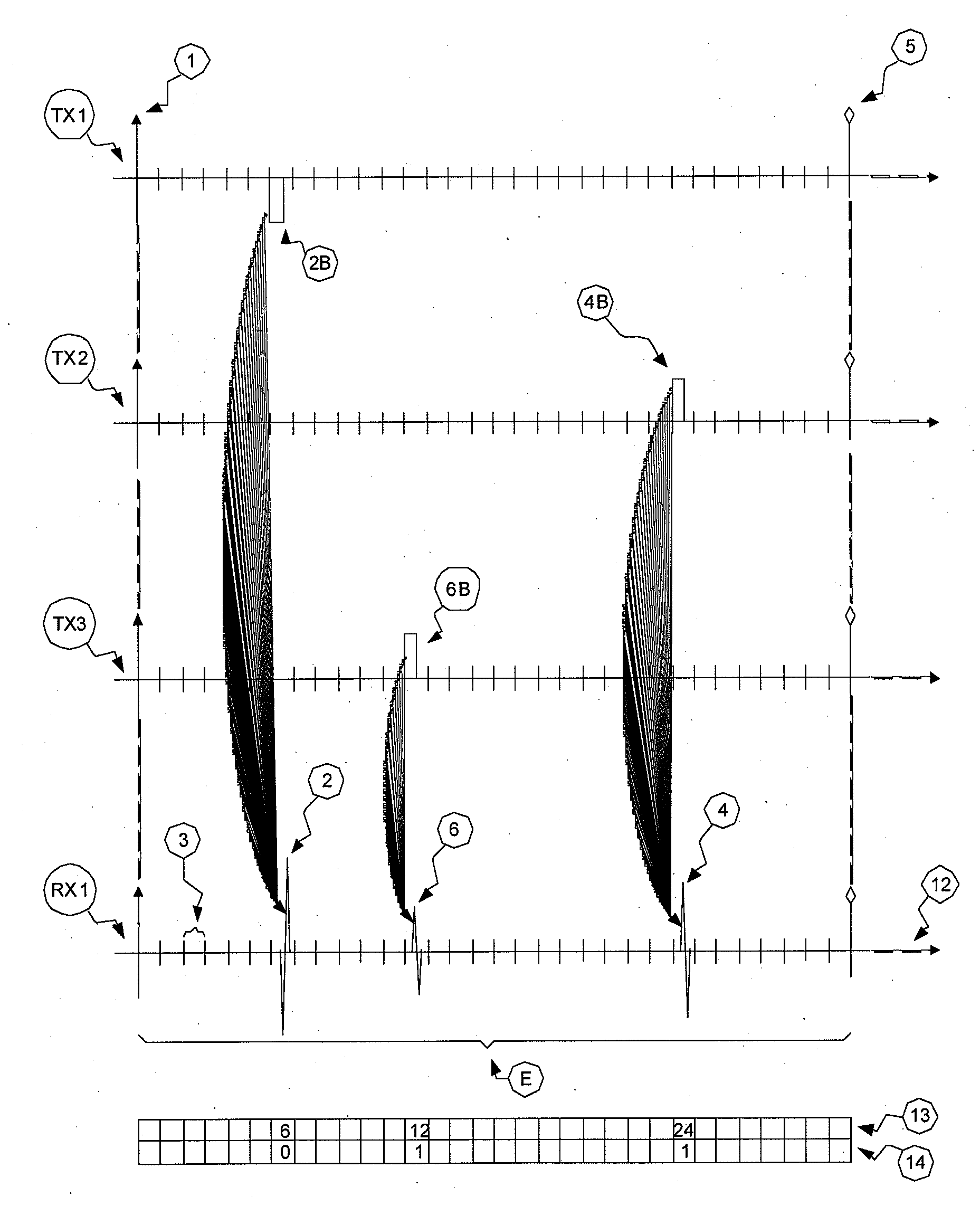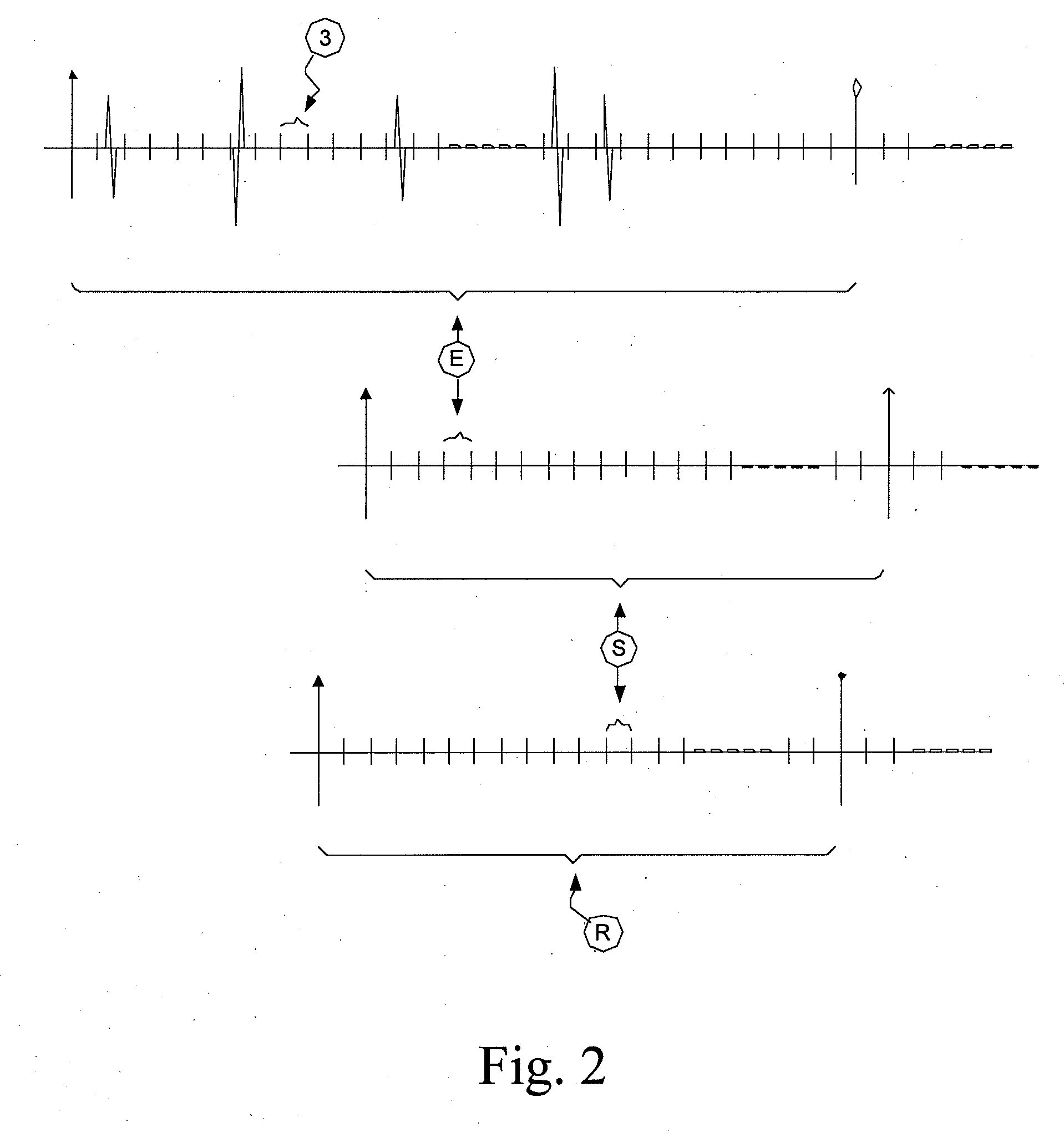Method and Apparatus for Low Power Modulation and Massive Medium Access Control
a medium access control and low power modulation technology, applied in the field of medium access control (mac) layer design and data modulation in a communication system, can solve the problems of inability to exhibit high performance when using massive approaches, inefficient algorithms, and contentions in reservation time, so as to enhance the total system performance, increase process gain, and save power
- Summary
- Abstract
- Description
- Claims
- Application Information
AI Technical Summary
Benefits of technology
Problems solved by technology
Method used
Image
Examples
Embodiment Construction
[0091]An epoch is a communication resource space that can position any number whose base is equal to or smaller than the size of the epoch. The invention provides a technique referred to as Epoch Position Multiple Access (EPMA). Communicating units often use a unique number as their identifier, e.g. a Medium Access Control (MAC) address or an Internet Protocol (IP) number. This unique number allows for all parties to identify the source or destination of the communicated information unambiguously. EPMA takes advantage of the uniqueness of this identifier or address as means of avoiding collisions, while transmitting as few symbols as possible.
[0092]In EPMA, all communicating parties broadcast their data using one or several shared media resources, such as time, amplitude, frequency, phase, code, etc. whose allotments uniquely depend on the unique address of the communicating node. Each node transmits its data in a medium resource slot dedicated to that particular transmitted data va...
PUM
 Login to View More
Login to View More Abstract
Description
Claims
Application Information
 Login to View More
Login to View More - R&D
- Intellectual Property
- Life Sciences
- Materials
- Tech Scout
- Unparalleled Data Quality
- Higher Quality Content
- 60% Fewer Hallucinations
Browse by: Latest US Patents, China's latest patents, Technical Efficacy Thesaurus, Application Domain, Technology Topic, Popular Technical Reports.
© 2025 PatSnap. All rights reserved.Legal|Privacy policy|Modern Slavery Act Transparency Statement|Sitemap|About US| Contact US: help@patsnap.com



